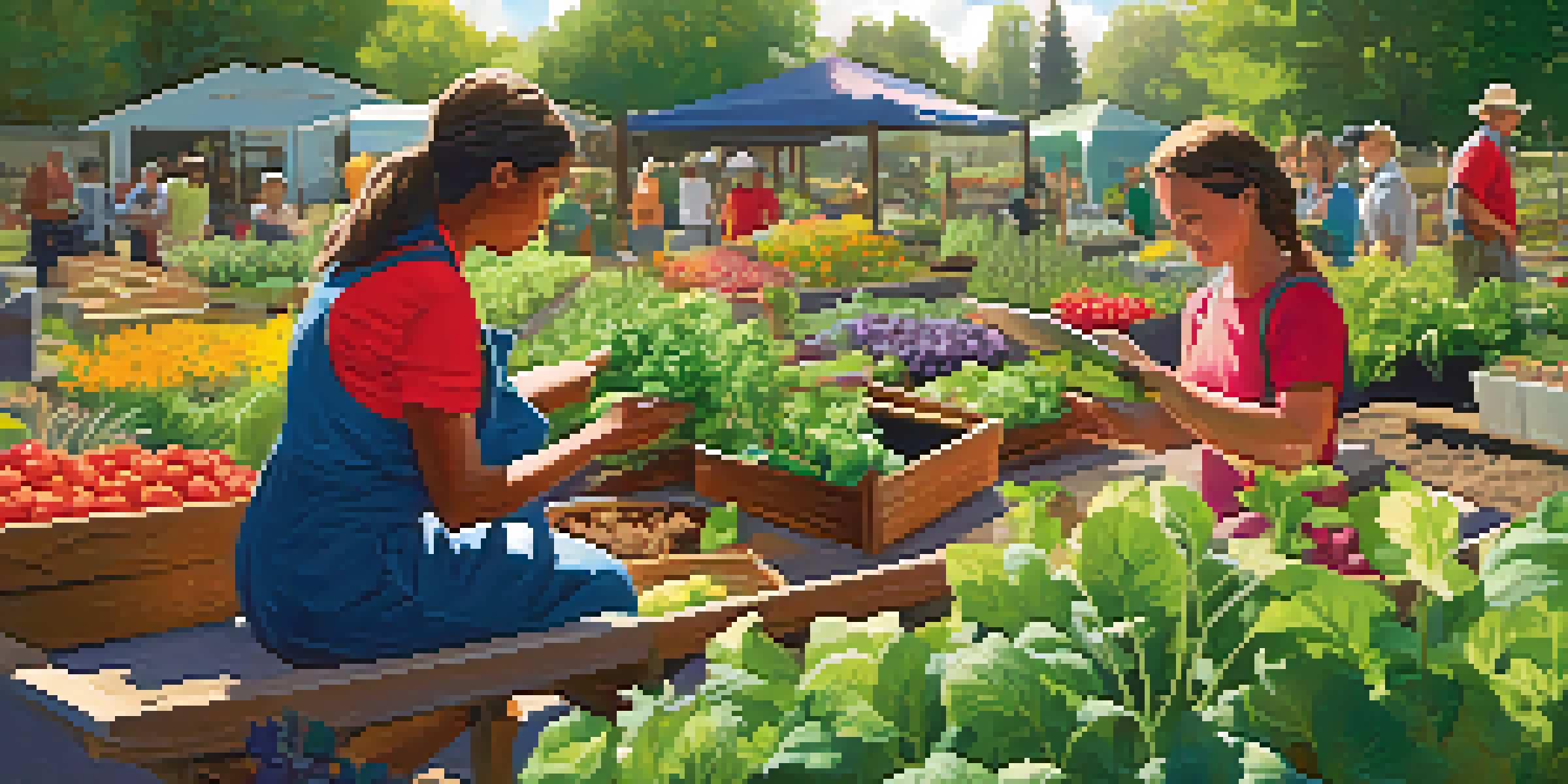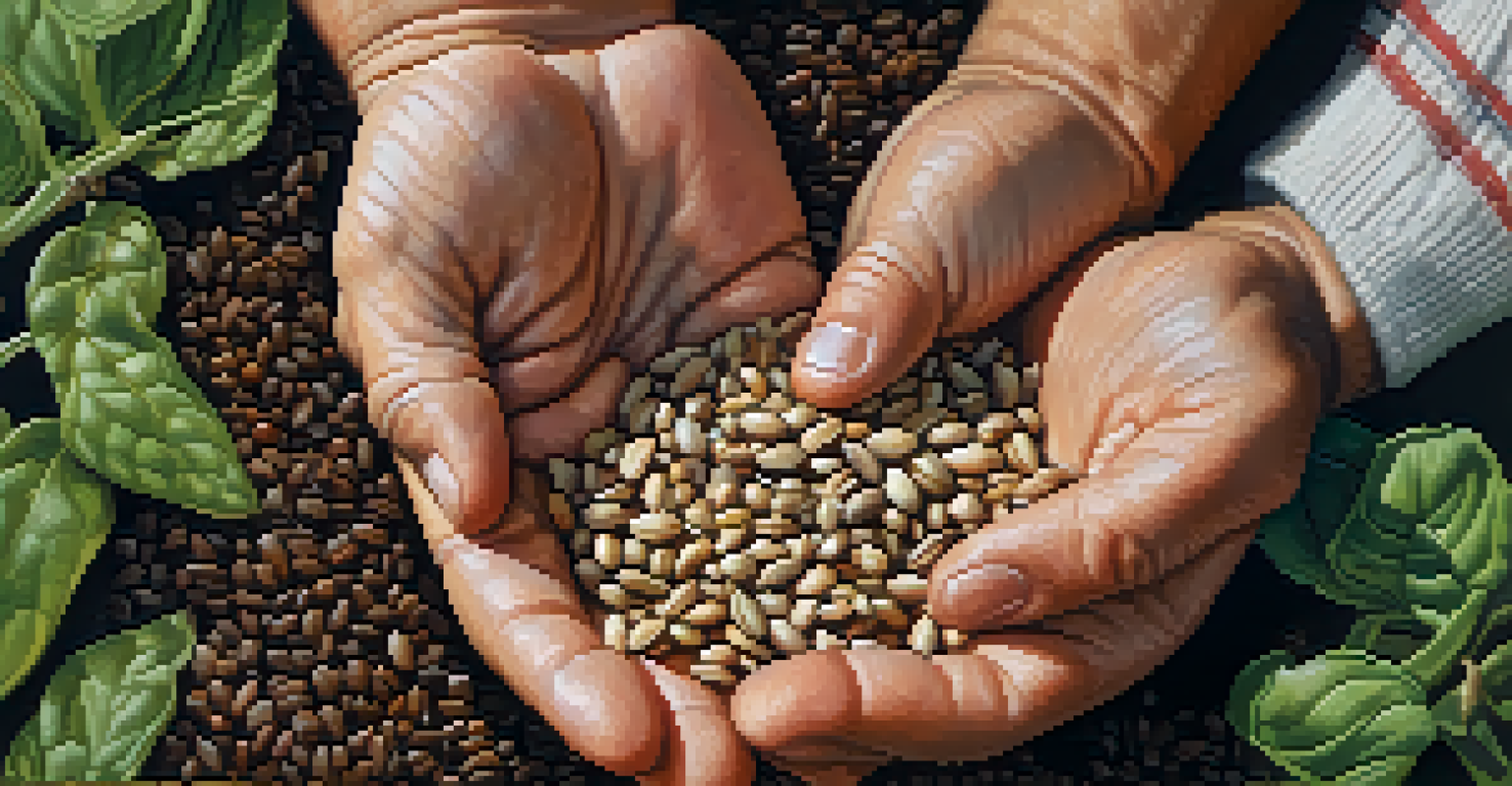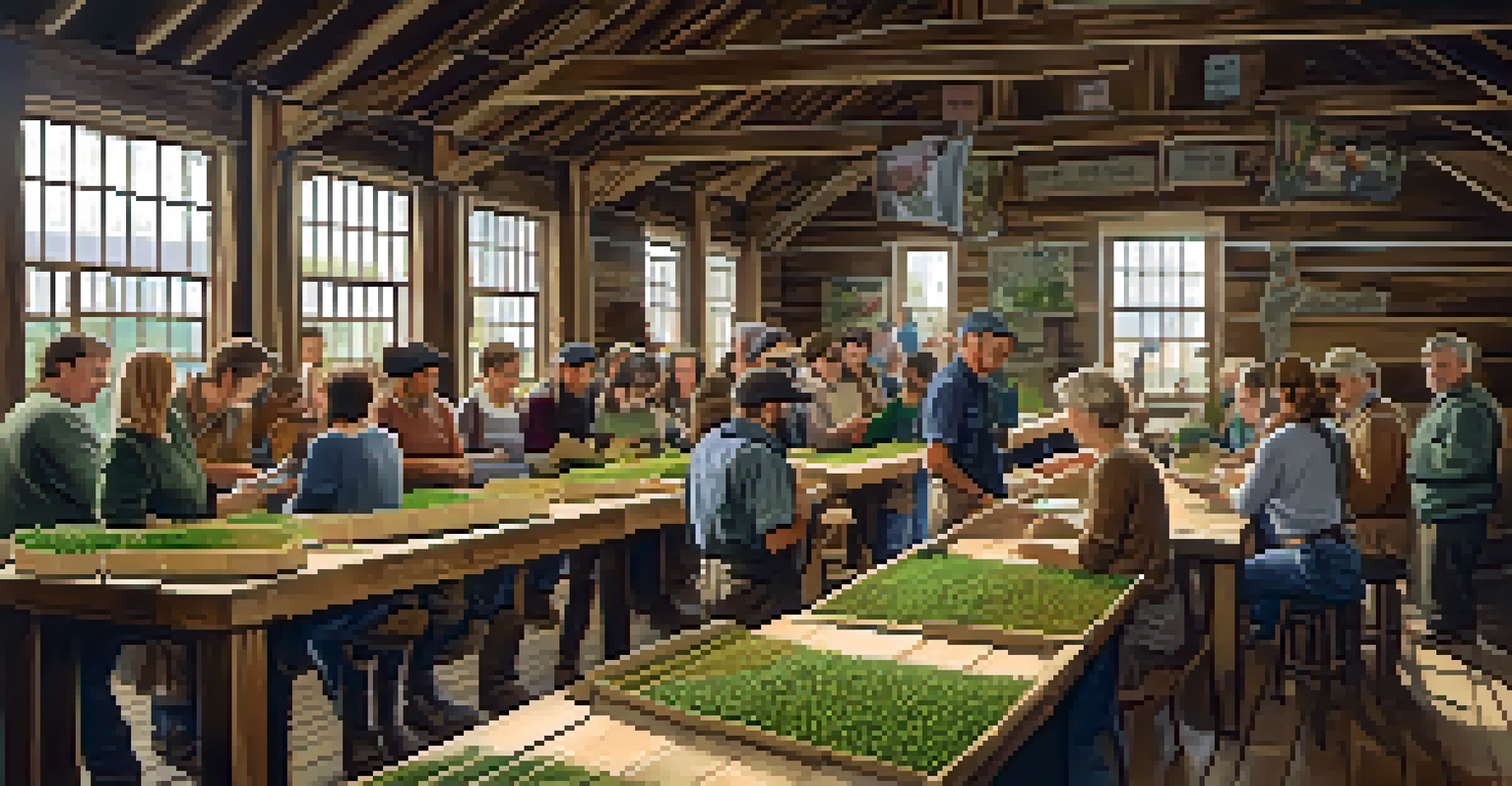Seed Saving: Preserving Biodiversity in Sustainable Farming

Understanding Seed Saving and Its Importance
Seed saving involves collecting and storing seeds from plants to use in future growing seasons. This practice is crucial for maintaining the genetic diversity of crops, which is essential for resilient food systems. By preserving a variety of seeds, farmers can adapt to changing climate conditions and pests, ensuring food security for generations to come.
The future of food is not about monoculture; it's about diversity, about complexity, about the resilience that comes from having many different plants and animals in the ecosystem.
In sustainable farming, seed saving serves not only as a method of preservation but also as a means of empowerment. Farmers who save seeds can reduce their reliance on commercial seed suppliers, which often promote monoculture and can lead to biodiversity loss. By cultivating diverse plant varieties, farmers can create a more balanced and productive ecosystem.
Moreover, seed saving fosters community engagement and knowledge sharing. When farmers save and exchange seeds, they create networks that encourage collaboration and support. These connections help share traditional farming practices and preserve local plant varieties, enhancing agricultural resilience and biodiversity.
The Role of Biodiversity in Agriculture
Biodiversity in agriculture refers to the variety of plants, animals, and microorganisms that contribute to the farming ecosystem. This diversity is vital for ecosystem health, as it supports natural pest control, pollination, and soil fertility. Without biodiversity, crops may become more susceptible to diseases and environmental stressors, jeopardizing food production.

When farmers incorporate diverse seed varieties into their practices, they promote a more balanced ecosystem. For example, planting different types of crops can reduce the risk of total crop failure due to disease or extreme weather. This variety can also enhance soil health and nutrient cycling, creating a sustainable agricultural system that benefits both farmers and the environment.
Seed Saving Enhances Food Security
Collecting and preserving diverse seeds helps farmers adapt to climate changes and pests, ensuring food systems remain resilient.
Additionally, biodiversity contributes to the nutritional quality of food. A diverse diet, supported by various crop varieties, can provide a wider range of essential vitamins and minerals. Thus, maintaining biodiversity through seed saving not only supports ecological balance but also promotes human health.
How Seed Saving Supports Sustainable Practices
Seed saving aligns with the principles of sustainable farming by promoting ecological balance and reducing environmental impact. When farmers save seeds, they minimize the need for synthetic inputs like fertilizers and pesticides, which can harm the environment. Instead, they can select seeds that are naturally resilient to local pests and diseases, fostering a healthier ecosystem.
To plant a garden is to believe in tomorrow.
Furthermore, seed saving encourages organic farming practices. By focusing on heirloom and open-pollinated varieties, farmers can grow crops that thrive without chemical interventions. This organic approach not only improves soil health but also enhances the flavor and nutritional value of the food produced.
In addition, seed saving can contribute to economic sustainability. By saving seeds, farmers can cut costs associated with purchasing new seeds each season. This practice can lead to greater financial independence and stability, allowing farmers to invest in other sustainable practices.
Challenges to Seed Saving Practices
Despite its benefits, seed saving faces several challenges in modern agriculture. One significant hurdle is the dominance of large agribusinesses that control seed supply through patented seeds. These seeds are often engineered for uniformity, which can undermine traditional seed saving practices and reduce genetic diversity.
Another challenge is the lack of knowledge and resources among farmers. Not all farmers have access to information on how to properly save seeds, which can lead to poor seed quality and lower yields. Organizations and agricultural extension services play a crucial role in educating farmers about effective seed saving techniques.
Biodiversity Boosts Agricultural Health
A variety of crops supports natural pest control and soil fertility, reducing the risk of crop failure and promoting sustainability.
Additionally, climate change poses a significant threat to traditional seed varieties. As weather patterns shift unpredictably, some heirloom seeds may not perform well in new conditions. This reality emphasizes the need for ongoing research and support to adapt seed-saving practices to an ever-changing environment.
Best Practices for Successful Seed Saving
To successfully save seeds, farmers should start by choosing the right plant varieties, ideally heirloom or open-pollinated types. These varieties are more likely to produce seeds that retain the desired traits in subsequent generations. Additionally, it’s essential to select healthy plants that show resilience to local pests and diseases for seed collection.
Proper timing and techniques are also crucial for effective seed saving. Farmers should wait until seeds are fully mature before harvesting, ensuring they have the best chance of germination. Techniques such as drying and storing seeds in a cool, dark place can preserve their viability for future planting.
Lastly, documenting the seed-saving process can be incredibly beneficial. Keeping records of seed types, planting dates, and performance can help refine future planting strategies. This knowledge-sharing can extend to community seed banks, where farmers can exchange seeds and learn from one another’s experiences.
Community Efforts in Seed Saving Initiatives
Many communities are recognizing the importance of seed saving and are establishing initiatives to promote this practice. Community seed banks are becoming increasingly popular, where local farmers can store and share seeds. These banks not only preserve local biodiversity but also strengthen community ties and foster knowledge exchange.
Workshops and educational programs are essential components of these initiatives, teaching farmers about the benefits and techniques of seed saving. By bringing together experienced farmers and newcomers, these programs can help build a community of practice around sustainable agriculture. This collaborative learning environment encourages the sharing of best practices and innovative solutions to challenges.
Community Initiatives Foster Knowledge
Community seed banks and educational programs strengthen ties among farmers, sharing best practices and preserving local biodiversity.
Additionally, local governments and organizations are beginning to support seed-saving efforts through funding and resources. By investing in these initiatives, they recognize the long-term benefits for both the environment and local economies. This support can play a crucial role in ensuring that seed saving becomes an integral part of sustainable farming practices.
The Future of Seed Saving and Biodiversity
Looking ahead, the future of seed saving is intertwined with the health of our planet and food systems. As climate change and population growth continue to challenge agriculture, preserving seed diversity will be more crucial than ever. By fostering an environment where seed saving is valued, we can promote resilience and adaptability in farming.
Technological advancements may also play a role in the future of seed saving. Tools such as genetic mapping and biotechnology can help identify and preserve valuable traits in seeds, ensuring they are equipped to thrive in changing conditions. However, these technologies should complement traditional practices, not replace them, maintaining the rich heritage of farming.

Ultimately, the success of seed saving initiatives will depend on collective efforts among farmers, communities, and policymakers. By prioritizing biodiversity and sustainable practices, we can cultivate a healthier planet and secure food sources for future generations. Embracing seed saving is not just about preserving plants; it’s about nurturing the future of our agricultural systems.